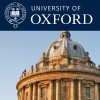Dr. Charles DiSimone, ‘Identical Cousins? Insights on the Parallel Development of Prajñāpāramitā Families Gleaned from New Manuscript Discoveries in Greater Gandhāra’
Dr. Charles DiSimone
FWO Postdoctoral Researcher, Department of Languages and Cultures, Ghent Centre for Buddhist Studies, Ghent University
‘Identical Cousins? Insights on the Parallel Development of Prajñāpāramitā Families Gleaned from New Manuscript Discoveries in Greater Gandhāra’
The beginnings Prajñāpāramitā literature may be traced to around the turn of the first millennium of the Common Era. In the centuries that followed, a very complex and fluid oral/textual transmission developed leading to different transmissions in disparate areas and times resulting in witnesses of the various Prajñāpāramitā works often containing a complicated web of textual similarities and differences. Multiple families of Prajñāpāramitā works developed with the earliest being the Aṣṭasāhasrikāprajñāpāramitā subfamily, which was soon followed by the Mahāprajñāpāramitā subfamily. The Aṣṭasāhasrikāprajñāpāramitā is thought to have been supplanted by the development of the Mahāprajñāpāramitā works in Central Asia until the Pāla period. This seemingly was also the case in Greater Gandhāra where at least three manuscript witnesses are preserved of the Mahāprajñāpāramitā in the Gilgit manuscripts. Quite recently, a new fragmentary witness of the Aṣṭasāhasrikā has been discovered at the archeological site at the ancient city of Mes Aynak, located about 40 km from Kabul in Afghanistan. There are only three other extant early manuscript testimonies of the Aṣṭasāhasrikāprajñāpāramitā: fragments of a 1st-2nd century Gāndhārī language Prajñāpāramitā birch bark scroll likely recovered from the Pakistan-Afghanistan border area, fragments of a Kuṣāṇa period manuscript likely recovered around Bāmiyān, and a single fragment from an 8th-9th century manuscript in South Turkestan Gupta Brāhmī found in Xinjiang. The Mes Aynak Fragments represent the fourth discovery of an Aṣṭasāhasrikāprajñāpāramitā predating the later Nepalese manuscript traditions and, being from the 6th-7th centuries of the Common Era, are the third oldest extant witnesses of this work. These fragments are of special note because they are the first manuscript testimony of the Aṣṭasāhasrikāprajñāpāramitā ever to have been found in Greater Gandhāra in a Gilgit/Bamiyan type script. The discovery of these manuscript fragments represents an important new data point in the study of the development of the Aṣṭasāhasrikāprajñāpāramitā and Prajñāpāramitā literature. Philological analysis of this new fragment has shown that this witness of the Aṣṭasāhasrikāprajñāpāramitā often diverges from the extant witnesses from the later Nepalese transmission of the work instead sharing several textual similarities with Mahāprajñāpāramitā manuscript witnesses preserved from Greater Gandhāra. In this paper I will introduce this new manuscript material along with a new witness of the Mahāprajñāpāramitā from Greater Gandhāra and lay out an analysis of these in comparison to the other extant manuscripts, editions, translations of the Aṣṭasāhasrikā and other Prajñāpāramitā manuscript material from Greater Gandhāra demonstrating that the Aṣṭasāhasrikāprajñāpāramitā and Mahāprajñāpāramitā subfamilies underwent a period of a parallel transmission in Greater Gandhāra where the corresponding material within Aṣṭasāhasrikāprajñāpāramitā and Mahāprajñāpāramitā shared closer similarities than found within later extant manuscript traditions upon which all modern editions of the Aṣṭasāhasrikāprajñāpāramitā have been made.




